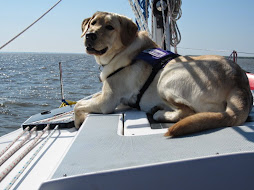With three litters of puppies to watch on the puppy cam, we’re
sure you’re curious about some of their development and some of the milestones
they reach. During the first few weeks, the puppies change and grow a lot. By
the end of the first week, they will have nearly doubled their birth weight.
Most of their time is spent sleeping, either huddled with their brothers and
sisters, or snuggling with their mom. If you’ve seen the puppy cam, you’ve
probably seen the puppies twitching in their sleep.
 |
| The Ice Cream Puppies snuggle in their sleep. |
The puppies’ eyes and ears are completely closed, which
means they depend on warmth, touch, and smell to find their mom and siblings. Although
the puppies can’t walk yet, they can scoot and slide using most their front
legs to propel them. If you watch the puppy cam, you can sometimes see the pups
moving their heads back and forth and scooting along, often in response to
their mother entering the whelping box. They’re trying to find food or warmth.
 |
| Bridge's eyes and ears and closed. |
 |
| Lunchtime for the Birthplace litter |
At this stage, the puppies are unable to regulate their body
temperature, so they rely on their mother to keep them warm. We also add
heating pads and sometimes heat lamps to the whelping box for those times when
the mom isn’t in with her pups.
The first 18 days of the puppies’ lives is very important,
especially since they’re going to be trained as service dogs. We do something
called Early Neurological Stimulation (ENS) with the puppies, which is very
mild stress that stimulates brain activity. There have been studies that have
found that dogs who experience mild stress during this early development are
more adaptable to stress later in life, are more stable, have improved health,
have greater resistance to disease, and learn faster, among other things.
With ENS, less is more, so we perform five activities with
the puppies once each day. Each activity only lasts 3-5 seconds.
1. Lay
the puppy on a cold, damp towel
2. Hold
the pup on its back in your hands
3. Hold
the puppy perpendicular to the ground with the head toward the ceiling
4. Hold
the puppy with its head down
5. Tickle
between the toes with a Q-tip
We’ll tell you about week two of the puppies’ development
next week.

























